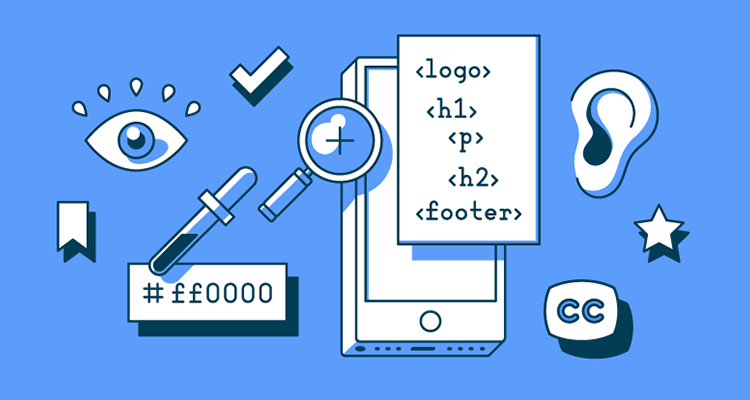Accessibility testing is also crucial for web applications like testing their functionalities and user interface, etc. Accessibility testing is performed by expert testers and also through user testing with people with disabilities. There are various requirements to be met in order to ensure web accessibility. People with different types of disabilities like hearing problems, compromised vision, color blindness, age-related issues, motor neuron incompetence, cognitive disabilities, impaired mental status, and so on. In order to make a website accessible, testing needed to be done to check compliance of the website with all types of accessibility guidelines as a subset of the website usability testing and UI testing.
Use of assistive technologies – AccessiBe
People having disabilities may be using different assistive devices to interpret the content. There are screen readers, navigators, compatible browsers, speech-to-text tools, etc. AccessiBe specifies that all of these will help users operate websites and web applications. Let us explore how these assistive devices work.
- Speech Recognition – Tools that help convert audio dictations to text, which can be used as an input mode.
- Screen Readers – Tools to read the content of the page for people with vision problems.
- Screen Magnifiers – Tools to enlarge the display size and help people with a compromised vision read the content.
- Special hardware devices – Like mice and keyboards for people with motion disabilities and motor deficiencies.
Testing for accessibility
A study shows that about one out of 10 people in the United States have disabilities. When a website or software application is made, the primary objective is to make it usable for all categories of users. In order to make it user-friendly for all, it should follow the standard development standards like the W3C standards for making a website and the WCAG standards for accessibility. Accessibility is also mandated per law. The Americans with Disabilities Act of 1990 specifies that all public entities need to be accessible for people with disabilities, and webspace comes under the broader definition of this act. Being a public utility, websites should also be compliant with the accessibility needs. In order to ensure this, accessibility testing is mandatory.
Similar to ADA, accessibility is mandated by law by various governments across the globe. Some of the major laws in different countries are the Disability Discrimination Act of the United Kingdom in 1995, the Disability Discrimination Act of Australia in 1992, the Disability Act of Ireland in 2005, etc. Even though there are slight differences in terms of the definitions of these laws in different countries, the primary objective of all these laws is to ensure accessibility compliance for people with disabilities.
Accessibility testing
Accessibility testing can be done manually or automated by covering the basic aspects such as:
– Whether all types of page operations can be accessed with a keyboard?
– Whether there is a proper user manual and documentation with instructions>
– Whether all the page elements and HTML tags followed properly?
– Are there shortcut keys for all menus?
– Whether proper alt text given for all media?
– Whether the labels on the application and tabs descriptive and clear?
AccessiBe offers accessibility compliance audits and suggests appropriate measures to make your websites compliant with ADA and WCAG standards.


![[pii_email_57bde08c1ab8c5c265e8] error solved](https://realmediahubs.com/wp-content/uploads/2023/04/Pii-Errors-pii_email_-15-400x300.png)
![Solved [pii_email_728b405f3855592d09be] Error Code in Mail?](https://realmediahubs.com/wp-content/uploads/2023/04/Pii-Errors-pii_email_-14-400x300.png)
![How To Fix [pii_pn_af6c930f8fd2c0a8] Error Code in Mail?](https://realmediahubs.com/wp-content/uploads/2023/04/Pii-Errors-pii_email_-11-400x300.png)
![Fix MS Outlook [Pii_email_90ed722ef8a357c6c0aa] Error Code](https://realmediahubs.com/wp-content/uploads/2023/04/Pii-Errors-pii_email_-10-400x300.png)
![Fix [Pii_email_d2004079e8eb882afcaa] Error Code](https://realmediahubs.com/wp-content/uploads/2023/04/Pii-Errors-pii_email_-9-400x300.png)
![[pii_pn_8a68e8c174733080624b] Fix Outlook Error Code](https://realmediahubs.com/wp-content/uploads/2023/04/Pii-Errors-pii_email_-8-400x300.png)












Comments